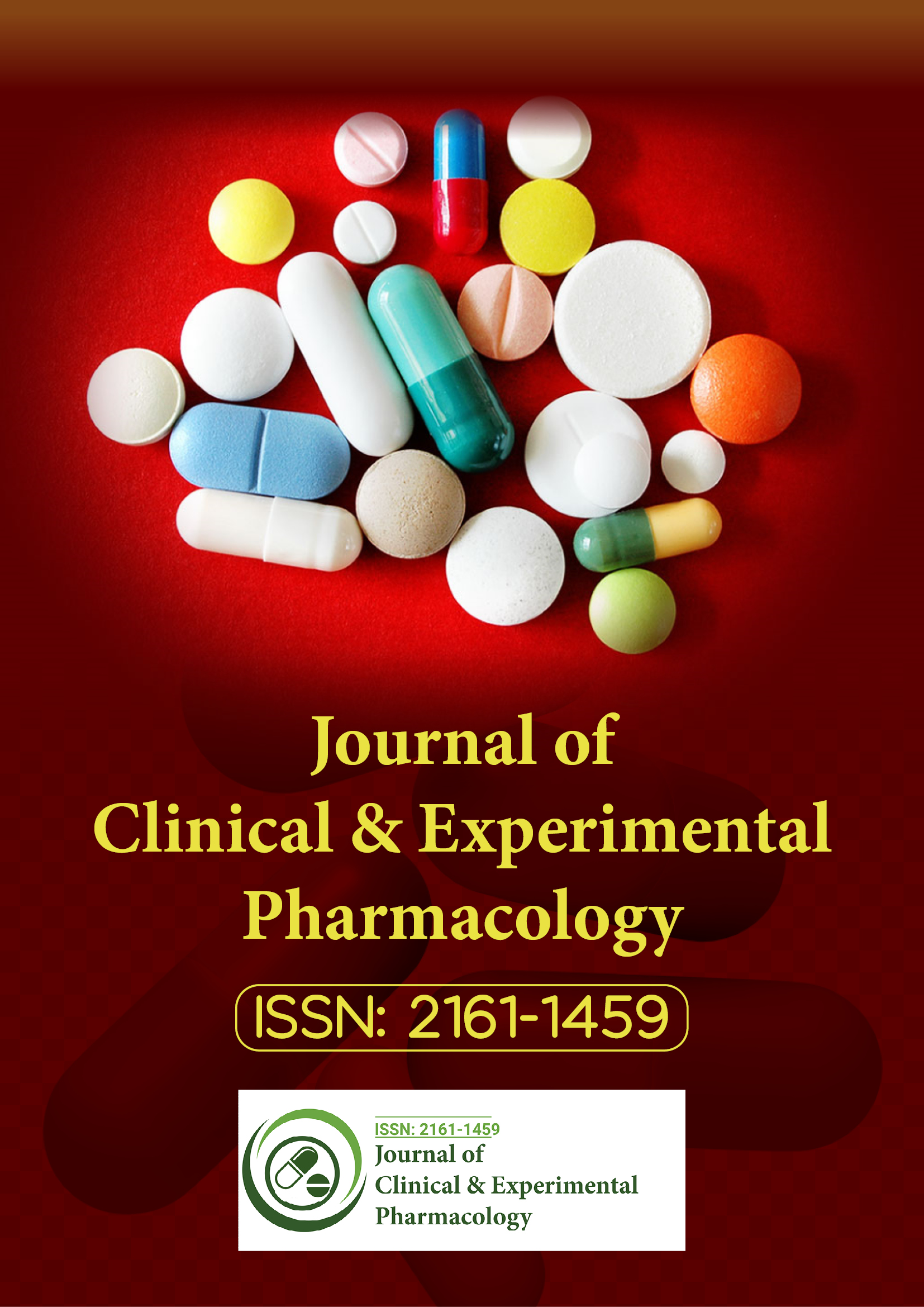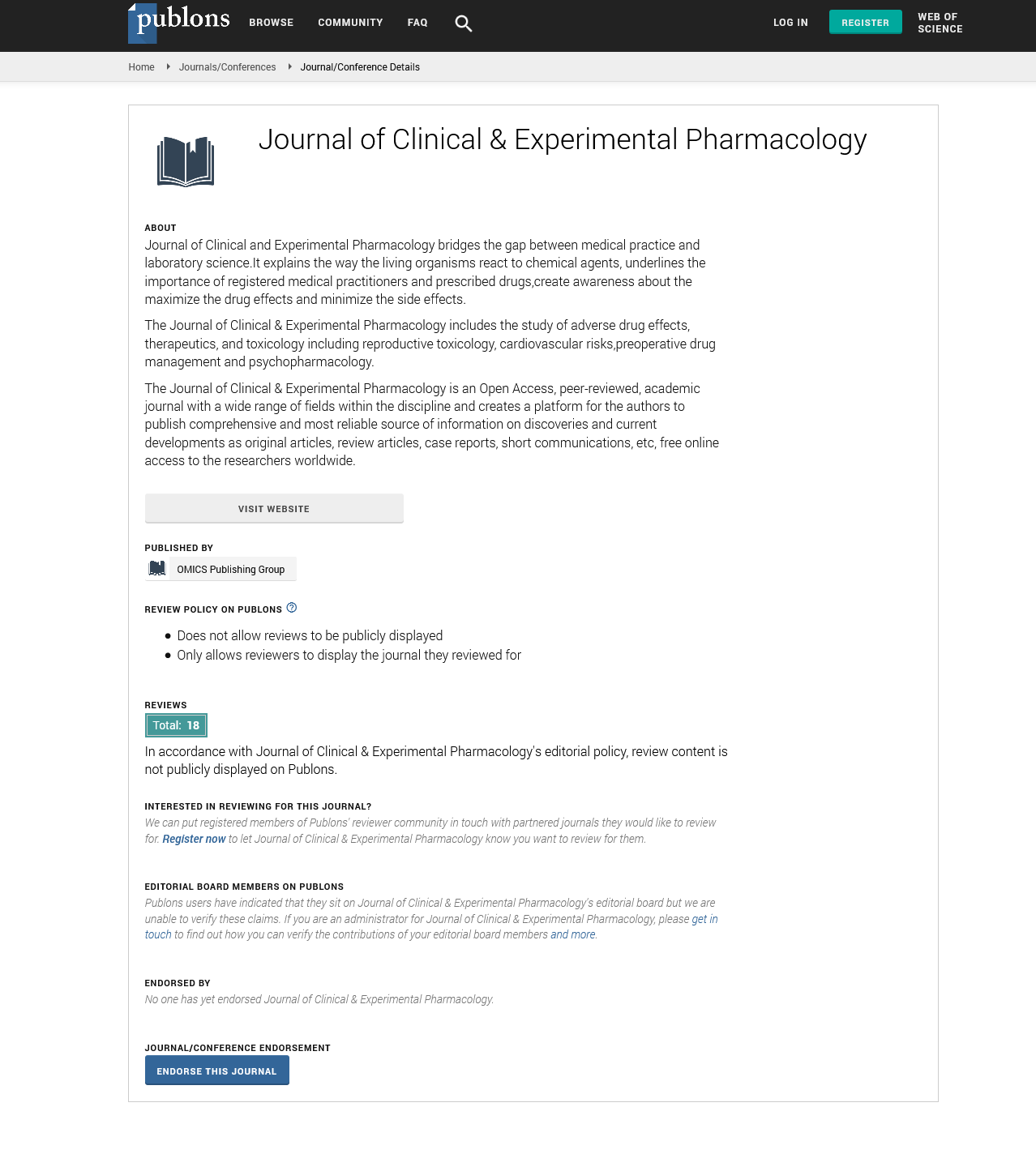Indexed In
- Open J Gate
- Genamics JournalSeek
- China National Knowledge Infrastructure (CNKI)
- Ulrich's Periodicals Directory
- RefSeek
- Hamdard University
- EBSCO A-Z
- OCLC- WorldCat
- Publons
- Google Scholar
Useful Links
Share This Page
Journal Flyer

Open Access Journals
- Agri and Aquaculture
- Biochemistry
- Bioinformatics & Systems Biology
- Business & Management
- Chemistry
- Clinical Sciences
- Engineering
- Food & Nutrition
- General Science
- Genetics & Molecular Biology
- Immunology & Microbiology
- Medical Sciences
- Neuroscience & Psychology
- Nursing & Health Care
- Pharmaceutical Sciences
Toxicity assessment of Erythrophleum ivorense and Parquetina nigrescens
World Congress on Pharmacology
July 20-22, 2015 Brisbane, Australia
Christian Agyare
Posters-Accepted Abstracts: Clin Exp Pharmacol
Abstract:
Erythrophleum ivorense and Parquetina nigrescens are found growing in tropical regions and they are used in African traditional medicine to treat various ailments including wounds, boils and anaemic conditions. Some species of plant in the Erythrophleum genus are also known to be poisonous and toxic to several livestock. However, there is no information on the toxicity of E. ivorense and P. nigrescens. This study is to determine the cytotoxicity and sub chronic toxicity properties of methanol leaf extract (EIML) and methanol stem barks extract (EIMB) of E. ivorense and methanol leaf and aerial part extract of P. nigrescens (PNML). Concentrations from 0.1 to 100?g/mL of the extracts were used to determine the influence of the extracts on the release of lactate dehydrogenase (LDH) from HaCaT keratinocytes. The EIML and EIMB extracts showed increase in LDH released from HaCaT keratinocytes at 0.1 to 10?g/mL and 1 to 100 ?g/mL for the PNML extracts (p>0.05). Wistar rats were orally administered with 100, 300 and 1000mg/kg body weight of the extracts (EIML, EIMB and PNML) for 35 days. Tissues from the kidney and liver of the rats treated with lower doses (100 to 300mg/kg body weight) of EIML extract showed highly vascularized kidneys with numerous glomerular tufts, healthy hepatocytes and sinusoids in liver. However, there were persistent renal tissue inflammation and glomerular degeneration in kidney, and increased inflammatory infiltrates with few vacuolations and scarrings in liver in rats treated with higher extract dose of 1000mg/kg body weight of rat. The rats treated with EIMB extract showed persistent renal and hepatocyte inflammations with glomerular and hepatocyte necrosis at all administered doses (100, 300 and 1000mg/kg body weight) which are indications of renal and hepatic toxicities. Though rats administered with 100 and 300 mg/kg of PNML extract showed renal hemorrhage and inflammation and hepatic inflammation, the rats administered with 1000 mg/kg body weight showed restoring glomerular tufts and improved vasculature and liver with reduced inflammatory infiltrates with healthy hepatocytes. Phytochemical screening of EIML, EIMB and PNML extracts revealed the presence of alkaloids, tannins, flavonoids, sterols, cardiac glycosides and terpenoids.

